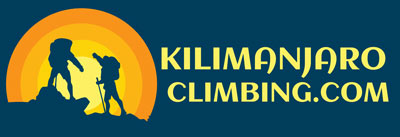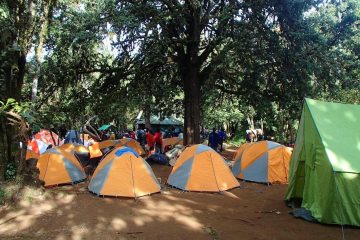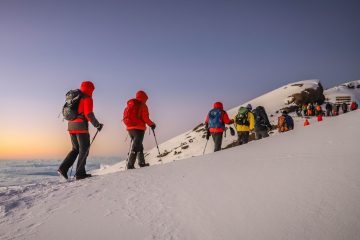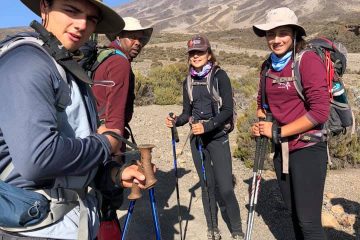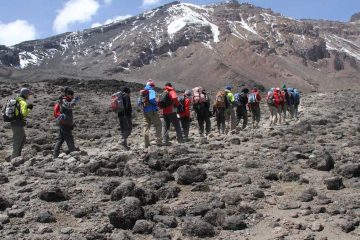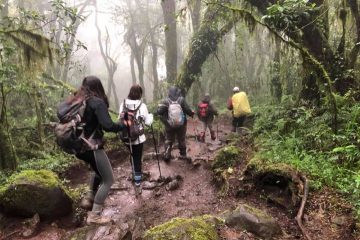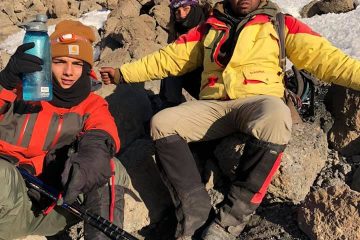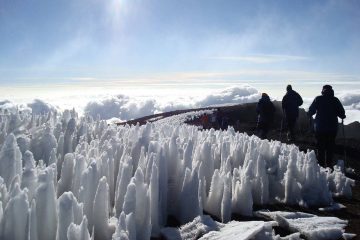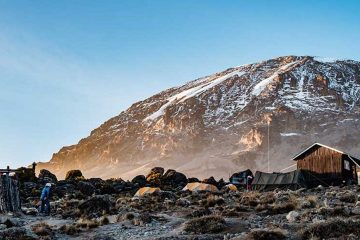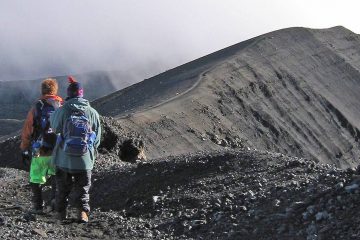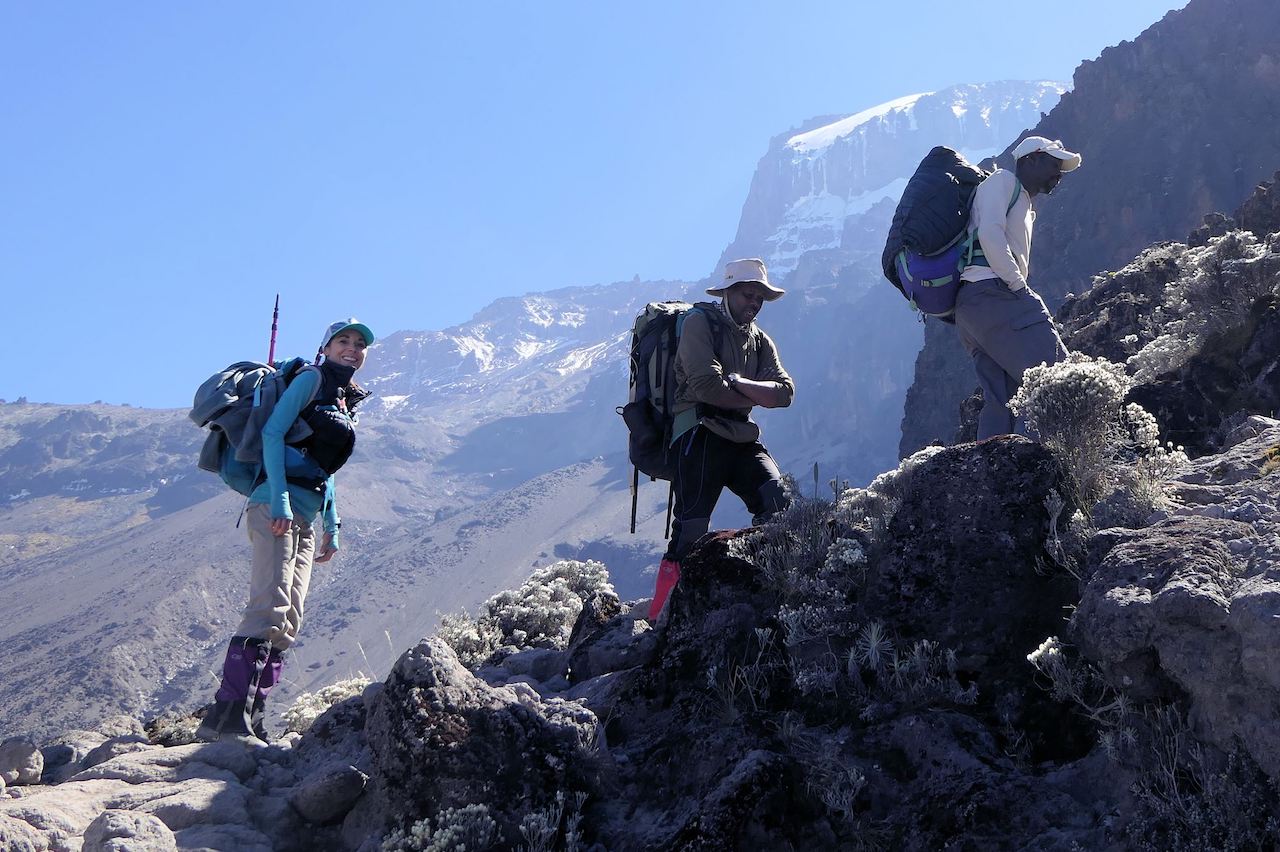Kilimanjaro Climbing is a premier trekking company based in Moshi, with Mount Kilimanjaro climbing as our core business. We offer safe and affordable Kilimanjaro trekking tours through all routes, with one sole aim; of taking you to the summit of the ‘rooftop of Africa’. Join us for an unforgettable hike up of Mt Kilimanjaro, with a success rate of approximately 98% !
Mount Kilimanjaro (pronounced; Ki-li-man-ja-roh) is the highest mountain in Africa, and the highest free standing Volcano in the world, due to its nature of standing alone on a flat area as opposed to other peaks in the world that rise above from a range of mountains. Mount Kilimanjaro has 3 main peaks. The highest is Kibo Peak where Uhuru Peak (the summit) sits. Uhuru Peak stands at 5,895 meters equivalent to 19,341 feet above sea level. Kibo Peak carries the most of the remaining glaciers which are currently under immense threat of disappearance climate change. The glaciers are estimated to disappear between the year 2025 and 2035. The others are Mawenzi peak to the east and Shira peak to the west of the mountain.
Where is Mount Kilimanjaro?
Mount Kilimanjaro is a dormant volcano and it’s located in Tanzania, in East Africa, at the eastern border with Kenya. The mountain makes up the biggest park of the Kilimanjaro National Park. Kilimanjaro is the fourth most topographically prominent peak on Earth.
